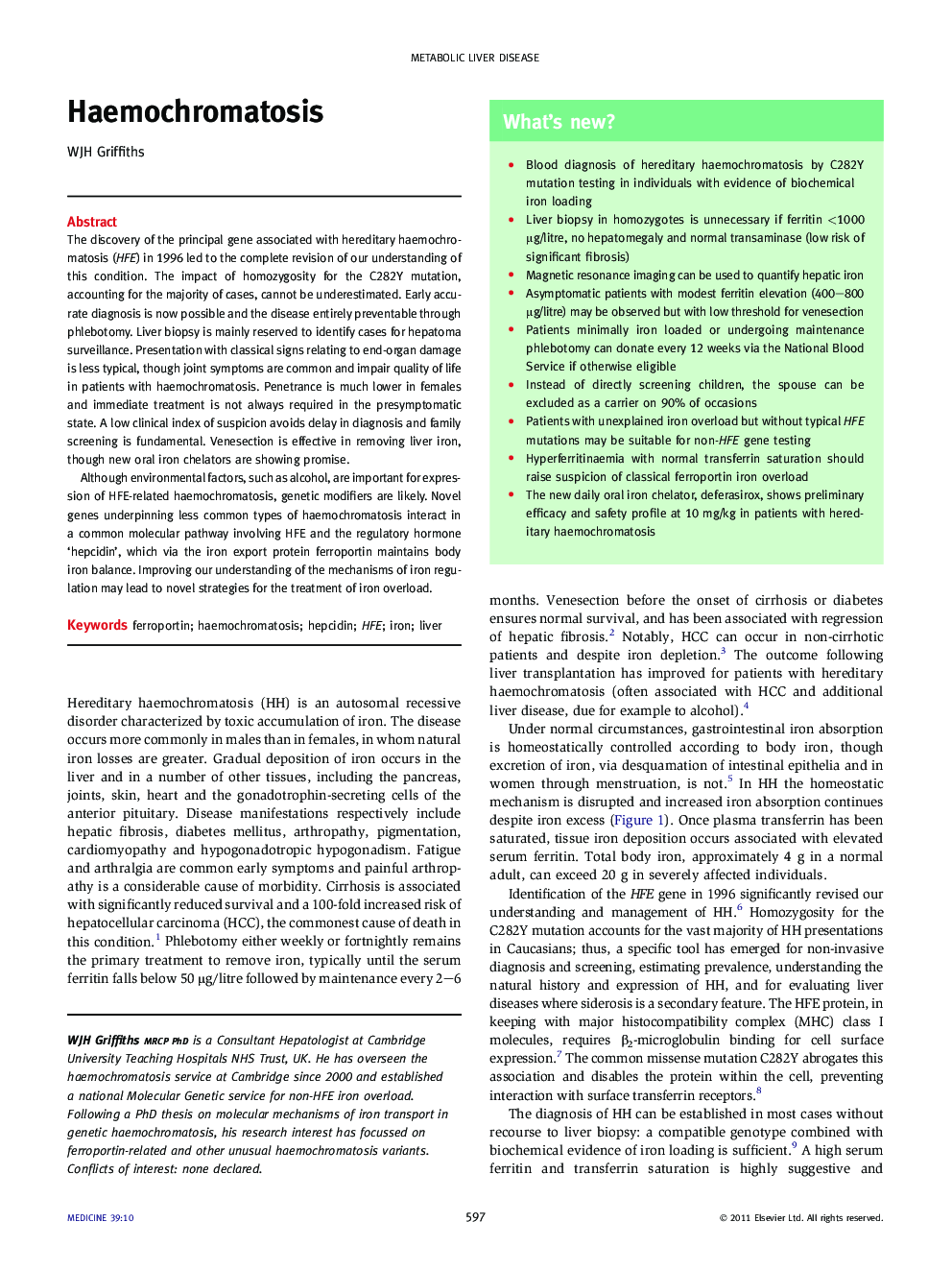| Article ID | Journal | Published Year | Pages | File Type |
|---|---|---|---|---|
| 3804848 | Medicine | 2011 | 5 Pages |
The discovery of the principal gene associated with hereditary haemochromatosis (HFE) in 1996 led to the complete revision of our understanding of this condition. The impact of homozygosity for the C282Y mutation, accounting for the majority of cases, cannot be underestimated. Early accurate diagnosis is now possible and the disease entirely preventable through phlebotomy. Liver biopsy is mainly reserved to identify cases for hepatoma surveillance. Presentation with classical signs relating to end-organ damage is less typical, though joint symptoms are common and impair quality of life in patients with haemochromatosis. Penetrance is much lower in females and immediate treatment is not always required in the presymptomatic state. A low clinical index of suspicion avoids delay in diagnosis and family screening is fundamental. Venesection is effective in removing liver iron, though new oral iron chelators are showing promise.Although environmental factors, such as alcohol, are important for expression of HFE-related haemochromatosis, genetic modifiers are likely. Novel genes underpinning less common types of haemochromatosis interact in a common molecular pathway involving HFE and the regulatory hormone ‘hepcidin’, which via the iron export protein ferroportin maintains body iron balance. Improving our understanding of the mechanisms of iron regulation may lead to novel strategies for the treatment of iron overload.
